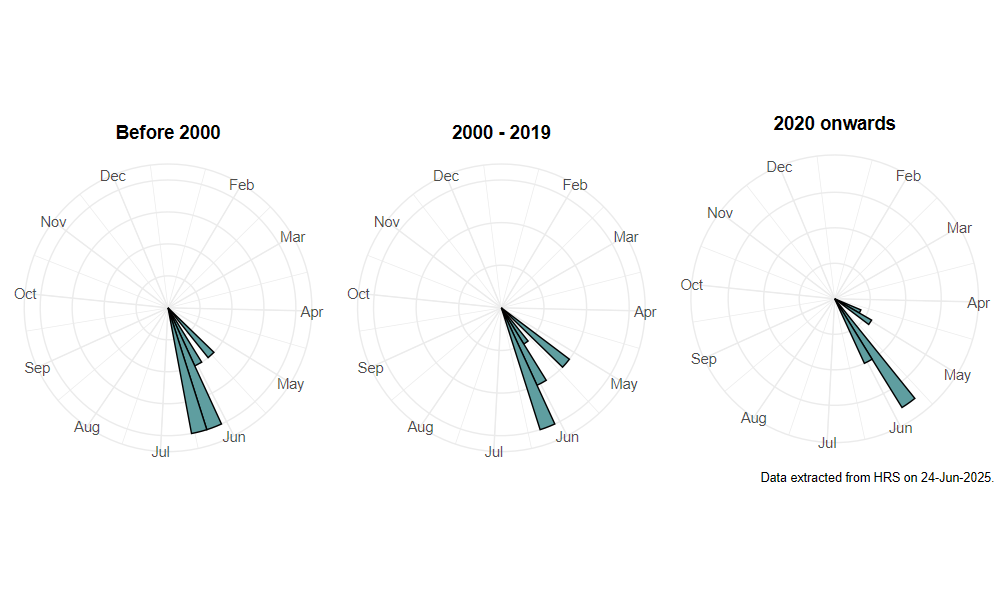Dasysyrphus neovenustus Soszyński, Mielczarek & Tofilski, 2013
Identification
Identification difficulty = 4. ![]()
![]() according to Ball & Morris, 20241
according to Ball & Morris, 20241
Synonymy
A recent split from D. venustus added to the British list by Speight & Vanappelghem (2018)2.
Biology
A yet, little is known about the biology, but it is likley to be suimilar to the closely related D. venustsus whose larvae are feed on arboreal aphids on coniferous trees.
Flight period
The following plots show the number of unique records per week excluding those reported to be of immature stages.

Status
Likely to be more widespread in coniferous situations, but the difficulty of identification may limit the numbers of records.
Distribution
A few records from coniferous woodlands in central Scotland and North Yorkshire.

-
Ball, S., & Morris, R. (2024). Hoverflies of Britain and Ireland. WILDGuides (3rd ed.). Oxford: Princeton University Press. ↩
-
Speight, M., & Vanappelghem, C. (2018). Dasysyrphus neovenustus Soszynski, Mielczarek & Tofilski, (Diptera, Syrphidae): presence in Britain, France and Ireland. Dipterists Digest (Second Series), 25(1), 31–34. ↩